- July 15, 2025
- By Rebecca Washington
- Uncategorized
How Many Linear Feet of Gutters Are on a 2000 Square Foot House in West Palm Beach, Florida?
How Many Linear Feet of Gutters Are on a 2000 Square Foot House in West Palm Beach, Florida?
If you’re a homeowner in West Palm Beach, Florida, and you’re wondering how many linear feet of gutters are on a 2000 square foot house, you’re far from alone. Understanding gutter measurements is essential not only for accurate installation costs, but also for planning gutter replacement, maintenance, or stormwater management—which is especially critical in a region like Palm Beach County, where heavy rain and hurricanes are common.

With Gutters Of West Palm Beach, we’ll break down the average linear footage of gutters for a 2000 sq ft home, explains what affects that number, and helps you estimate gutter installation costs with local relevance.
🏠 The Short Answer: How Many Feet of Gutters for 2000 Sq Ft?
While square footage gives us a rough estimate of home size, gutters are measured in linear feet and are installed along the roofline—not the floor plan. For an average single-story 2000 square foot home, the standard estimate is 120 to 200 linear feet of gutters. Multi-story homes with complex rooflines may require more.
Quick range estimate for West Palm Beach homes:
- Ranch-style or single-story: ~120–150 linear feet
- Two-story or with complex rooflines: ~150–200+ linear feet
✅ Pro Tip: Most gutter contractors in West Palm Beach especially Gutters Of West Palm Beach will measure your home’s roof perimeter and eaves rather than using square footage alone.
🌴 Why Accurate Gutter Measurements Matter in West Palm Beach
In West Palm Beach, average annual rainfall exceeds 60 inches, and storm season (June to November) can bring intense downpours. Having a properly sized gutter system is crucial for:
- Preventing roof and fascia damage
- Avoiding foundation erosion
- Managing runoff to protect landscaping
- Complying with local building codes
Local homes often feature tile or metal roofs and architectural elements like covered lanais, hip roofs, or attached garages, all of which impact gutter needs.
📏 How to Calculate Gutter Linear Feet on Your Own
Here’s a simplified way to estimate the linear feet of gutters for your home in West Palm Beach:
1. Measure the Roofline
- Walk around the home and measure the length of each roof edge that requires a gutter.
- Exclude gables or sides that don’t direct water downward.
2. Account for Additional Structures
- Include attached garages, porches, patios, or lanai covers.
3. Add for Downspout Placement
- Add about 5–10 feet per downspout, depending on spacing. Downspouts are usually placed every 30–40 feet.
Example:
- Front: 50 ft
- Back: 50 ft
- Left side: 40 ft
- Right side: 40 ft
- Garage: 20 ft
- Patio: 15 ft
- Estimated Total: 215 linear feet (including downspouts)
🛠️ Common Gutter Types & Materials in West Palm Beach
Selecting the right gutter style can impact not just the linear footage but also the installation cost and long-term performance in Florida’s subtropical climate.
Popular Gutter Materials:
| Material | Avg. Price Per Linear Foot | Notes |
|---|---|---|
| Aluminum | $6–$12 | Lightweight, rust-resistant, common in FL |
| Galvanized Steel | $8–$14 | Durable but can corrode if not maintained |
| Copper | $20–$35+ | Premium, stylish, long-lasting |
| Vinyl | $3–$6 | Low-cost, less durable in high heat/humidity |
Style:
- K-Style Gutters (common in Palm Beach homes): Decorative, high capacity
- Half-Round Gutters: Classic look, less capacity
- Seamless Gutters: Custom-fit, reduce leakage—ideal for heavy rains
💵 Gutter Installation Cost Per Linear Foot in West Palm Beach
Knowing the estimated linear feet of gutters makes budgeting much easier. As of 2025, here’s a rough cost breakdown:
| Gutter Type | Installed Cost (Per Linear Foot) | 200 Linear Feet (Est.) |
|---|---|---|
| Seamless Aluminum | $8–$12 | $1,600–$2,400 |
| Copper | $20–$35 | $4,000–$7,000 |
| Vinyl | $4–$7 | $800–$1,400 |
Additional Costs:
- Downspouts: $50–$150 each
- Leaf guards: $4–$10 per foot
- Fascia repair: $5–$10 per foot (if needed)
🧾 Local Insight: In West Palm Beach, contractors may charge higher rates due to coastal exposure risks, permitting requirements, or insurance compliance.
🧰 Local Considerations: Building Codes & Permits in Palm Beach County
Although gutter installation doesn’t always require a permit, homes in West Palm Beach situated in flood-prone zones or within HOA communities may need specific approvals.
📌 Check with:
- Palm Beach County Building Division
- Local HOA guidelines
- Florida Building Code (FBC) compliance, especially for hurricane straps or wind-resistance specs
🔎 What Local Gutter Installers Consider in West Palm Beach
When providing quotes, gutter contractors in West Palm Beach, FL typically evaluate:
- Roof complexity (e.g., valleys, peaks)
- Type of roofing material (clay tile, asphalt shingles)
- Existing drainage issues
- Tree coverage (more trees = more debris = consider leaf guards)
- Proximity to the coast (salt air can corrode some metals)
🔧 Notable Local Gutter Pros:
- Gutter Professionals Inc.
- The Brothers That Just Do Gutters – West Palm Beach
- Coastal Seamless Gutters
📉 How to Save on Gutter Installation
Here are some practical tips to reduce costs without sacrificing performance:
- Get at least 3 local quotes.
- Bundle services (e.g., new roof + gutters).
- Opt for seamless aluminum for balance of durability and cost.
- Schedule installation in off-peak seasons, like late winter.
- Maintain existing fascia and soffit, reducing prep work costs.
✅ Final Takeaway
To answer the question “How many linear feet of gutters are on a 2000 square foot house?” — it’s typically between 120 and 200 feet, depending on your roofline, architecture, and elevation. In West Palm Beach, factoring in local climate, building codes, and drainage needs is critical.
Gutters are a crucial investment in stormwater protection and home longevity, especially in a high-rainfall zone like South Florida. With the right measurements and materials, you’ll safeguard your property from erosion, flooding, and foundation issues.
…
- July 15, 2025
- By Rebecca Washington
- Uncategorized
Can a Handyman Repair a Gutter? | Gutter Repair in West Palm Beach, Florida
Can a Handyman Repair a Gutter? | Gutter Repair in West Palm Beach, Florida
Gutters may be easy to overlook—until they start leaking, sagging, or pulling away from the fascia. When that happens, most homeowners face a key question: Can a handyman repair a gutter, or should you call a roofing specialist? If you live in West Palm Beach, Florida, where tropical storms and heavy rains are a seasonal reality, keeping your gutters in top shape is non-negotiable.
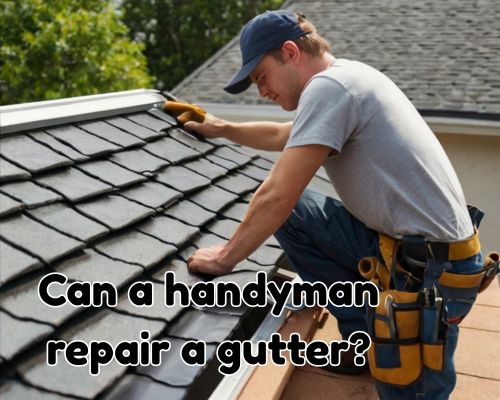
With Gutters Of West Palm Beach, let’s explore what tasks a handyman can legally and skillfully handle when it comes to gutter repairs, and when it’s best to involve a licensed roofing or gutter contractor. This guide is tailored for West Palm Beach homeowners, and it unpacks costs, licensing requirements, and the smartest repair strategies in the Palm Beach County area.
Understanding the Role of a Handyman
A handyman is typically a general home repair professional skilled in minor fixes across plumbing, carpentry, electrical, and structural areas. In Florida, a handyman does not need a state license for basic tasks but is limited in what they can legally perform, especially for jobs involving structural changes or systems like roofing.
Tasks a Handyman Can Do on Gutters:
- Resealing leaking gutter joints with silicone or sealant
- Reattaching loose gutter brackets or hangers
- Clearing clogs and cleaning downspouts
- Replacing short sections of aluminum or vinyl gutter
- Painting or aesthetic touch-ups
What a Handyman Cannot (or Shouldn’t) Do in Florida:
- Replace an entire gutter system
- Install new guttering beyond minor sections
- Modify roofline or fascia boards that support gutters
- Work on multi-story structures without proper safety equipment
- Conduct repairs that require a roofing contractor’s license
According to the Florida Department of Business and Professional Regulation (DBPR), if a job affects the building’s structure or exceeds a certain dollar value (typically $500–$1,000), it may require a licensed contractor like Gutters Of West Palm Beach.
Gutter Damage Is Common in West Palm Beach
Living in West Palm Beach, FL, comes with a mix of sunshine, salt air, and tropical downpours. This coastal climate contributes to common gutter problems such as:
- Corrosion and rust (especially in metal gutters)
- Sagging from storm debris weight
- Joint leaks due to sun exposure and thermal expansion
- Blockages from palm fronds and heavy leaf fall
- Mold and algae growth from standing water
Because of these environmental stressors, regular gutter maintenance is not just a best practice—it’s essential. Even minor damage can compromise your home’s drainage and lead to foundation issues, roof leaks, and pest infestations.
Cost of Gutter Repair by a Handyman in West Palm Beach
Here’s a look at what you might expect to pay for gutter repairs performed by a handyman in West Palm Beach:
| Service | Estimated Cost |
|---|---|
| Seal leaking joint | $75 – $125 |
| Refasten loose gutter bracket | $50 – $90 |
| Clean clogged gutters & downspouts | $100 – $180 |
| Replace a short damaged section (3ft) | $150 – $250 |
These prices are based on typical handyman hourly rates in Palm Beach County, which average $50–$75 per hour. Always verify if your handyman carries liability insurance to cover accidents or unintended damage.
When to Hire a Licensed Gutter or Roofing Contractor
If your gutter issue is more than cosmetic or minor, it’s time to bring in the big guns—a licensed roofing or gutter specialist in West Palm Beach. This is especially true if:
- The gutter is part of a larger roof drainage problem
- The damage is structural or near electrical wiring
- You need seamless gutter installation
- Your home is two or more stories tall
- You’re making an insurance claim (insurance companies often require licensed contractor documentation)
In Palm Beach County, reputable companies like Kool Gutter, Palm Beach Gutter Pros, and Seamless Gutters West Palm provide these services. They also typically offer free on-site quotes, warranties, and stormproof options like leaf guards or rainwater diverters.
Can a Handyman Be a Cost-Effective Option?
Absolutely—when used strategically, a skilled handyman can offer excellent value. For example:
- If you notice a single leaking joint on your gutter
- If a bracket came loose after a storm
- If you want a quick gutter cleaning before hurricane season
However, homeowners should avoid overrelying on handymen for larger gutter issues. Improper gutter slope, misaligned downspouts, or water overflow near the foundation can cause long-term damage if not professionally diagnosed.
How to Find a Qualified Handyman in West Palm Beach
If you’re looking for a vetted, reliable handyman, consider checking:
- Nextdoor (local recommendations)
- Thumbtack or Angi (with reviews and cost estimates)
- Palm Beach County Home Services Directory
- Facebook community groups like “West Palm Beach Fix-It & Trades”
Before hiring, ask:
- Are you insured or bonded?
- How many gutter repair jobs have you done?
- Will you provide a written estimate?
- What materials do you use for sealants or replacements?
A professional handyman will not shy away from answering, and if they can’t handle the job, many will refer you to a trusted gutter pro.
Gutter Maintenance Tips for West Palm Beach Homeowners
Prevention is cheaper than repair. Keep your gutters functional year-round by:
- Cleaning twice a year (especially after hurricane season)
- Installing gutter guards to keep out palm fronds and pine needles
- Checking for loose brackets or sagging
- Watching for water overflow during rainstorms
- Inspecting for visible rust or bubbling paint
Conclusion: Yes, But With Limits
So, can a handyman repair a gutter? In West Palm Beach, Florida, the answer is yes—if the job is minor. For basic sealing, reattaching, or clearing out debris, a handyman can be a quick and affordable fix. But for extensive repairs, replacements, or anything involving your roofline, a licensed gutter professional is your safest and most compliant bet.
Homeownership in South Florida means dealing with nature’s extremes—from blazing heat to sudden downpours. Staying proactive with gutter care and knowing who to call when things go wrong ensures your property remains protected—and your repair budget stays manageable.
Local Gutter Repair Contacts in West Palm Beach
- Kool Gutter Systems – Specializing in seamless gutters, licensed & insured
- Palm Beach Handyman Services – General handyman work with gutter repair experience
- All Seasons Roofing & Gutter – Full-service roofing & drainage experts
- Gutter Solutions WPB – Custom gutter installations & repairs
🔧 Need a gutter looked at? Start with a free quote, even if you’re just exploring options. A trustworthy pro (or sharp handyman) will help you determine the best fix for your Florida home.
…
- July 15, 2025
- By Rebecca Washington
- Uncategorized
How Much Does Guttering Cost Per m² in Melbourne, Australia?
How Much Does Guttering Cost Per m² in Melbourne, Australia?
When planning a home renovation or building project in Melbourne, it’s easy to get caught up in the visual wow-factor—shiny roofs, fresh paint, sleek facades. But guttering? Often overlooked… until it fails.
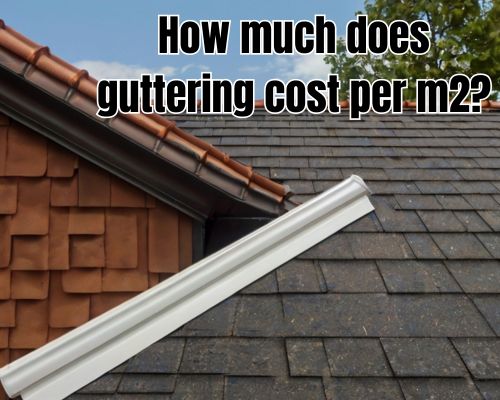
Whether you’re replacing old systems or installing new ones, understanding how much guttering costs per m² in Melbourne isn’t just about budgeting—it’s about making informed, long-term choices that protect your home from water damage, mold, and costly repairs.
So let’s break it down: What should you expect to pay per square metre of guttering in Melbourne? And what factors affect those numbers? Let’s have it with Gutter Cleaning Melbourne.
Average Guttering Costs Per Square Metre in Melbourne
In 2025, the typical cost of guttering in Melbourne, VIC, ranges from $30 to $160 per m², depending on several critical factors—material, installation complexity, roof height, profile type, and labour charges.
| Gutter Material | Approx. Cost per m² (Supply Only) | Installed Price (incl. Labour) |
|---|---|---|
| PVC / Vinyl | $30 – $45 | $55 – $75 |
| Colorbond Steel | $35 – $55 | $70 – $110 |
| Zincalume | $40 – $60 | $75 – $120 |
| Stainless Steel | $80 – $120 | $120 – $160 |
| Aluminium | $50 – $80 | $90 – $130 |
| Copper | $110 – $160 | $150 – $220+ |
💡 Note: These costs are indicative per m² of guttering area, not per linear metre—be mindful when quoting.
Why the Wide Range in Prices?
Before you wonder if guttering quotes in Melbourne are being plucked from thin air, let’s dissect what drives the cost variation.
1. Material Matters
Materials dramatically influence both cost and longevity. Colorbond gutters, a favourite in Australia for their corrosion resistance and wide colour range, are often the go-to for suburban Melbourne homes. PVC is the budget choice, while copper and stainless steel are reserved for prestige builds or heritage restorations.
2. Guttering Profile
Do you want quad gutters, half-round, box gutters, or square-line? The profile type not only affects aesthetics but determines how much water the gutter can handle. Complex profiles typically require more skilled installation, nudging up labour costs.
3. Roof Accessibility
Got a double-storey terrace in South Yarra or a sloped roof in Eltham? Expect to pay more. Difficult access means added scaffolding, safety equipment, and labour hours.
4. Installation Complexity
A straight run of guttering on a flat roof is a breeze. But if your home has multiple rooflines, valleys, eaves, or integrated downpipes, that complexity demands more time and materials—and boosts cost per m².
Hidden Costs You Shouldn’t Ignore
It’s easy to focus on just the linear or m² cost of the guttering itself, but savvy Melbourne homeowners also budget for these:
- Downpipes: Around $50–$90 each installed (Colorbond or PVC).
- Fascia Replacement: If rotted, replacement costs may run $45–$75 per m².
- Gutter Guards: Installing mesh guards to prevent blockages ranges from $30–$60 per m².
- Disposal Fees: Old guttering removal may cost $150–$350 total depending on waste volume.
💬 Pro Tip: Some gutter installers in Melbourne bundle these into a full-service package, especially in eastern suburbs like Box Hill, Camberwell, or Balwyn.
How Melbourne’s Climate Influences Guttering Choices
Melbourne’s famously four-seasons-in-a-day weather brings intense UV, torrential rain, and sudden cold snaps. That means your guttering needs to be robust, UV-resistant, and capable of handling heavy rainfall events—especially in suburbs like Doncaster or Dandenong Ranges, where tree debris is also a concern.
This climate is why Colorbond steel dominates gutter installations across Melbourne. Its baked-on paint finish resists chipping, cracking and fading—even in scorching sun or icy winds.
DIY vs. Professional Gutter Installation in Melbourne
You might be tempted to cut costs by going the DIY route, especially if the quote from your local roofer in Moonee Ponds made your wallet cry. But here’s the kicker: DIY gutter installation in Victoria isn’t always legal.
According to Victorian Building Authority (VBA) regulations:
- Only licensed plumbers (roofing category) can legally install gutters.
- Insurance may be voided if installation is not done by a registered professional.
- Incorrect falls or poor joins can lead to water pooling and eventual foundation damage.
So yes—you could save money upfront, but risk far bigger expenses later. For professional needs, see Gutter Cleaning Melbourne.
Local Labour Rates: Melbourne Guttering Installers
In Melbourne, licensed roof plumbers charge between $60 and $120 per hour, depending on experience and complexity of the job.
For a standard single-storey 3-bedroom home, expect to pay around:
- $2,500–$4,000 for a full guttering replacement in Colorbond (including downpipes).
- $5,000+ for premium metal materials or complex installations.
Reputable installers in Melbourne suburbs like Brighton, Essendon, and Glen Waverley often include:
- Material sourcing
- Full installation
- Cleanup
- Compliance certification
- 5–10 year workmanship warranty
How to Choose the Right Guttering for Your Melbourne Home
If you’re stuck choosing between cost and quality, here’s a quick cheat sheet tailored for Victorian conditions:
| Condition | Recommended Material | Reason |
|---|---|---|
| Near the coast (e.g. Brighton) | Aluminium or Stainless Steel | Corrosion resistance |
| Tree-heavy areas (e.g. Eltham) | Quad gutters with guards | Handles debris, easy to clean |
| Budget-conscious | PVC or Colorbond | Affordable and efficient |
| Heritage homes | Copper or steel in OG profiles | Aesthetic match and durability |
| Modern homes | Squareline Colorbond | Sleek aesthetic, high performance |
Final Thoughts: What’s the “True Cost” of Guttering in Melbourne?
So, how much does guttering cost per m² in Melbourne?
➡️ Short answer: $30–$160/m², with full installations averaging between $70–$130/m².
➡️ But long answer? The cost isn’t just about square metres—it’s about protection, performance, and peace of mind.
Whether you live in Melbourne’s bayside, north-eastern suburbs, or the Dandenong foothills, getting the right guttering system means fewer problems down the track—and lower total cost of homeownership.
So don’t just ask how much—ask how well will it protect your home?
…
- July 15, 2025
- By Rebecca Washington
- Uncategorized
How Much Does Roofline Work Cost in Melbourne, Australia?
How Much Does Roofline Work Cost in Melbourne, Australia?
Roofline work is one of those critical investments most homeowners in Melbourne don’t think about—until it’s absolutely necessary. From fascias and soffits to guttering and bargeboards, these components protect your home from the elements, improve curb appeal, and prevent costly structural damage. But if you’re wondering, “How much does roofline work cost in Melbourne?”, you’re not alone. The answer depends on a few key factors that we’ll break down with Gutter Cleaning Melbourne.
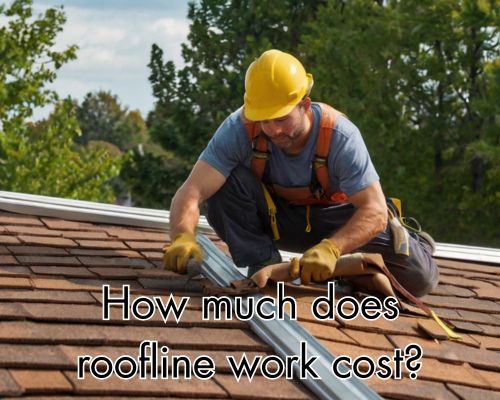
Whether you’re in Brighton, St Kilda, or the leafy suburbs of Doncaster or Glen Waverley, understanding the cost of roofline repairs or replacement will help you plan better and avoid hidden surprises.
What Exactly Is Roofline Work?
Let’s start with a quick primer. Your roofline refers to the collection of features that run along the edges of your roof:
- Fascias: These are the vertical boards that run along the edge of the roof, supporting the bottom row of tiles and holding up the guttering.
- Soffits: These are tucked underneath the fascia and help ventilate the roof while protecting rafters from moisture and pests.
- Bargeboards: Located at the gable ends of roofs, they serve both structural and decorative functions.
- Guttering and Downpipes: These are essential for directing rainwater away from your home’s foundations.
Roofline work can involve repairing, replacing, or upgrading any combination of these components.
Average Roofline Work Cost in Melbourne
In Melbourne, the cost of roofline work can vary significantly depending on the scope of the project, the materials used, and the accessibility of the roof. Here’s a rough breakdown:
| Roofline Component | Average Cost (AUD) |
|---|---|
| Soffit & Fascia Replacement | $80 – $120 per metre |
| Guttering Replacement | $50 – $100 per metre |
| Bargeboard Repairs | $500 – $1,500 per job |
| Full Roofline Overhaul | $3,500 – $8,000+ |
Keep in mind that these are averages. For heritage properties in suburbs like Fitzroy or Carlton, where ornate rooflines are common, prices can be significantly higher due to the complexity of the work.
Factors That Affect Roofline Work Costs
1. Material Choice
The type of materials used has a major impact on cost and longevity:
- PVC (uPVC): Popular for its affordability and low maintenance. Prices typically range from $80–$100 per metre.
- Timber: Aesthetically traditional but more expensive and high-maintenance. Ideal for period homes.
- Metal (Colorbond or Zincalume): Durable and modern. Colorbond fascias and guttering are widely used in Melbourne for their rust resistance and sleek look.
👉 Pro Tip: Colorbond is especially popular in areas like Point Cook and Craigieburn where modern housing developments dominate.
2. Access and Roof Height
A single-storey house in Hoppers Crossing will be much easier (and cheaper) to work on than a three-storey terrace in South Yarra. Roof access issues often mean additional scaffolding or cherry picker hire, which can add $500–$2,000 to your final bill.
3. Extent of Damage or Wear
Partial replacements will naturally cost less. But if there’s extensive rot, pest damage, or water ingress—especially common in older suburbs like Brunswick—you may need a full overhaul.
4. Labour Rates
Labour costs in Melbourne generally range between $50 to $80 per hour, but specialized trades like roof plumbers or carpenters may charge more for complex roofline tasks. Expect slightly higher hourly rates in central Melbourne or affluent areas like Toorak or Brighton.
Roofline Work vs. Roof Plumbing: What’s the Difference?
While there’s some overlap, roofline work isn’t the same as roof plumbing. Roof plumbers focus on waterproofing and drainage systems—like flashing, box gutters, and downpipes. Roofline specialists, on the other hand, deal more with the structural and aesthetic perimeters of the roof.
In Melbourne, many roofing companies provide both services as a package, so it’s worth getting quotes that include potential roof plumbing needs, especially if you’re dealing with water stains or drainage issues.
DIY vs. Professional Installation
You can attempt basic gutter cleaning or painting fascias yourself—but anything structural or at height should absolutely be left to licensed professionals like Gutter Cleaning Melbourne. Not only for safety reasons, but also to ensure compliance with Victorian Building Authority (VBA) regulations.
Failure to install guttering or soffits correctly can lead to water ingress, insulation issues, and even termite problems—especially in high-humidity zones like the Dandenong Ranges.
Is Roofline Work Covered by Insurance?
It depends. If the damage is sudden and caused by a storm (a common scenario during Melbourne’s temperamental spring), your home insurance may cover repairs. However, gradual deterioration due to neglect or poor maintenance likely won’t be covered.
👉 Always check with your insurer and document any storm damage immediately with photos and a qualified roof inspection.
How to Save Money on Roofline Work
- Get Multiple Quotes: Aim for at least three written quotes from licensed roofers in Melbourne.
- Schedule Off-Peak: Avoid peak seasons like summer or post-storm demand surges.
- Combine Jobs: Bundling roofline work with roof painting, insulation, or roof restoration may reduce overall labour costs.
- Consider Upgrades: Installing leaf guards or Colorbond replacements may cost more upfront but reduce maintenance over the long term.
Recommended Roofline Contractors in Melbourne
While we won’t name names here, platforms like Hipages, ServiceSeeking, and Oneflare are excellent for comparing verified local professionals. Look for roofline specialists with strong reviews in your suburb—especially those experienced with Melbourne’s diverse architectural styles, from Victorian terrace houses to contemporary townhouses.
Final Thoughts: Is Roofline Work Worth It?
Absolutely. Roofline work is not just a cosmetic upgrade—it protects your investment. In Melbourne’s unpredictable climate, where intense sun can warp timber and downpours can overwhelm weak guttering, maintaining a solid roofline is essential.
When budgeting for roofline work in Melbourne, factor in both immediate costs and long-term savings. Modern materials like Colorbond or PVC may have a higher upfront cost, but they pay off in durability and reduced maintenance. And don’t forget the added property value—clean, well-maintained fascias and gutters can add serious street appeal.
FAQs
Q: How long does roofline work take?
A: Small jobs like fascia replacement may take 1–2 days, while full overhauls can last up to a week, depending on weather and complexity.
Q: Can roofline work be done in winter?
A: Yes, though Melbourne’s winter rains may cause delays. Many roofers still operate year-round with weather-proofing strategies in place.
Q: Are there building permits required?
A: Not usually for like-for-like replacements. However, structural alterations or significant renovations may require council approval in some Melbourne municipalities.
…
- July 11, 2025
- By Rebecca Washington
- Uncategorized
What Type of Roof Will Last the Longest? A New Jersey Homeowner’s Guide
What Type of Roof Will Last the Longest? A New Jersey Homeowner’s Guide
In the Garden State, where harsh winters, humid summers, and nor’easters can test the limits of your home’s durability, investing in a long-lasting roofing system isn’t just smart—it’s essential. If you’ve been asking, “What type of roof will last the longest?” and you’re a New Jersey homeowner, this guide has your answer. With CJ Commercial Roofing NJ, we’ll explore the most durable roofing materials, compare lifespans, consider New Jersey’s unique climate factors, and help you make a decision that balances longevity, cost, and local suitability.

🏠 Why Roofing Longevity Matters in New Jersey
Roofs in New Jersey endure year-round exposure to extreme weather. From coastal salt spray in Cape May to heavy snowfall in Sussex County, local roofing materials must resist everything from moisture intrusion and mold growth to thermal expansion and high winds.
A long-lasting roof not only increases the value of your home in places like Princeton or Montclair, but also reduces the need for frequent maintenance or premature replacement—two things that can add up fast.
⛅ Climate Challenges That Affect Roof Longevity in NJ
Before diving into materials, it’s important to understand what local weather throws at your roof in New Jersey:
- Freeze-Thaw Cycles: Water expands when frozen, and repeated cycles can crack weaker roofing systems.
- High Humidity: Especially in areas near the Jersey Shore, this promotes mold and algae.
- Nor’easters & Windstorms: These can lift shingles and damage weaker structures.
- UV Exposure: Intense summer sun can degrade certain roofing materials.
So, what roofing material can stand up to all of these conditions the longest?
🥇 Most Durable Roofing Materials (Ranked by Lifespan)
Here’s a breakdown of the roofing materials known for their longevity, from longest-lasting to more budget-conscious choices.
1. Slate Roofing – 75 to 100+ Years
Slate is the undisputed king of roof longevity.
- Lifespan: Up to a century or more.
- Durability: Naturally fire-resistant, non-porous, and highly wind-resistant.
- Best For: Historic homes in towns like Morristown or Princeton; upscale properties that want timeless curb appeal.
- Local Insight: Slate roofs are common in older Northeast colonial-style homes and thrive in New Jersey’s temperate climate.
Drawback: Slate is expensive ($15–$30 per square foot) and requires reinforced roof framing due to its weight.
2. Clay or Concrete Tile – 50 to 100 Years
Though more popular in the Southwest, tile roofing has its place in New Jersey—especially coastal areas where salt corrosion can affect metal.
- Lifespan: Up to a century with proper maintenance.
- Durability: Resistant to fire, rot, and insect damage.
- Local Consideration: Often used in custom-built homes in Bergen County and around coastal cities like Atlantic City.
Drawback: Weight is again a concern; not ideal for all home structures.
3. Standing Seam Metal Roofing – 40 to 70 Years
This is a rising star in roofing longevity, especially for modern homes and eco-conscious homeowners.
- Lifespan: 40 to 70 years.
- Durability: High resistance to wind, corrosion, and temperature swings.
- Energy Efficiency: Reflects solar heat—perfect for reducing summer cooling costs in NJ.
- Local Bonus: Ideal for energy-efficient homes in Edison, Cherry Hill, or other areas prioritizing sustainability.
Note: Look for Kynar-coated panels to resist salt air and maintain color longevity.
4. Architectural Asphalt Shingles – 25 to 50 Years
The most common roofing material in New Jersey.
- Lifespan: 30 to 50 years for architectural-grade (vs. 15–25 years for 3-tab).
- Cost-effective: More affordable upfront, typically $5–$8 per square foot.
- Local Fit: Good balance of cost and performance in suburban towns like Toms River and Bridgewater.
Caveat: Not as durable under extreme wind conditions unless properly installed and sealed.
5. Synthetic (Composite) Roofing – 30 to 50 Years
Made to resemble slate or wood shake but with lower weight and higher impact resistance.
- Lifespan: Typically 40–50 years.
- Advantages: Lightweight, resistant to impact, and mold/mildew-resistant.
- Local Use: Often installed in upscale developments in areas like Short Hills or Colts Neck where aesthetics matter but slate is too heavy or costly.
🔍 Key Longevity Factors Beyond Materials
Even the best materials can underperform if other elements are overlooked:
✅ Proper Installation
Bad installation can void warranties and cut roof life in half. Always choose certified local contractors in New Jersey such as CJ Commercial Roofing NJ with experience in your chosen material.
✅ Ventilation & Insulation
Inadequate attic ventilation leads to trapped heat and moisture—prime culprits in roof deterioration.
✅ Gutter Maintenance
In places with heavy fall foliage like Summit or Morristown, clogged gutters can lead to water pooling and rot.
✅ Roof Pitch
Steeper roofs shed water and snow more effectively, reducing the likelihood of leaks or ice damming.
💬 Local Roofing Trends & Insights
In New Jersey, roofing preferences often align with architectural style and weather conditions:
- Shore Towns (Asbury Park, Ocean City): Metal roofing resists salt air and corrosion.
- Wooded Suburbs (Westfield, Chatham): Composite and asphalt shingles dominate for affordability and style.
- Historic Districts (Lambertville, Cape May): Slate and tile uphold traditional aesthetics and local regulations.
💰 Cost vs. Longevity: What’s the Best ROI?
If you’re planning to stay in your home for decades, a slate or metal roof is a solid investment. However, for rental properties or homes you plan to sell within 10–15 years, architectural shingles offer a better ROI.
Pro Tip for NJ Homeowners: Check with local municipalities for roofing permits and inquire about state energy efficiency incentives, particularly if choosing metal or solar-integrated systems.
🛠️ Final Answer: What Type of Roof Will Last the Longest?
Slate roofing will last the longest—often outliving the house itself. But standing seam metal roofing comes close and offers superior resilience to NJ’s climate while being lighter and more eco-friendly.
📌 Conclusion: Choosing Long-Term Roofing Value in New Jersey
When it comes to choosing a roofing system that will last the longest in New Jersey, there is no one-size-fits-all solution. Homeowners must weigh upfront cost, climate resilience, structural limitations, and long-term value. Whether you live near the Pine Barrens, the Jersey Shore, or deep in suburban Morris County, a roof that endures means peace of mind and reduced maintenance headaches.
Bottom line: If your goal is the longest-lasting roof, slate is the champ. But if you want durability without the weight or cost, metal roofing is a close contender for New Jersey homes.
…
- July 11, 2025
- By Rebecca Washington
- Uncategorized
How to Estimate Commercial Roofing Jobs in New Jersey: A Contractor’s Guide to Accurate Bids & Profitability
How to Estimate Commercial Roofing Jobs in New Jersey: A Contractor’s Guide to Accurate Bids & Profitability
Estimating commercial roofing jobs can be a complex process, especially in a highly regulated and diverse market like New Jersey, USA. Whether you’re a seasoned roofing contractor or new to the trade, developing accurate estimates is critical—not just for winning jobs, but for ensuring profitability and long-term client satisfaction.
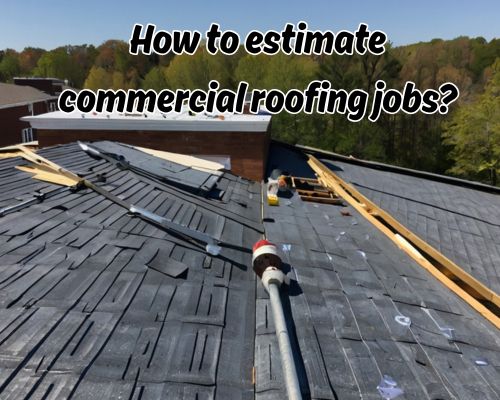
In this guide, we’ll walk through how to estimate commercial roofing jobs with precision, touching on key variables like material selection, labor costs, building codes, overhead, and local market influences.
✅ Why Accurate Estimation Matters in Commercial Roofing
In commercial roofing, underestimating can lead to budget overruns and negative client relationships, while overestimating can cause you to lose bids to competitors. Precision in estimating ensures:
- Realistic project timelines
- Appropriate material ordering
- Profitable margins
- Regulatory compliance
- Enhanced reputation and referrals
🏢 Step-by-Step: How to Estimate Commercial Roofing Jobs in New Jersey
1. Conduct a Comprehensive Site Inspection
Before you crunch numbers, inspect the job site thoroughly:
- Roof size: Measure the roof’s square footage (width × length), adjusting for slope.
- Roof type: Is it flat (low-slope), steep-slope, or a specialty roof (e.g., green or solar)?
- Current roof condition: Are there signs of rot, water damage, or membrane degradation?
- Access and logistics: Consider accessibility, debris removal, crane needs, etc.
🔎 In New Jersey cities like Newark, Trenton, and Jersey City, older industrial buildings often have outdated roof structures that may need reinforcement, impacting cost.
2. Select the Right Roofing System
Different materials come with different costs and lifespans. Some common commercial roofing systems in NJ include:
- TPO (Thermoplastic Polyolefin) – Popular for energy efficiency and cost-effectiveness
- EPDM (Ethylene Propylene Diene Monomer) – Great for flat roofs, especially in colder climates
- Built-up roofing (BUR) – Offers durability with multiple layers of bitumen and gravel
- Metal roofing – Long-lasting and fire-resistant, suitable for large structures
✅ In coastal areas like Atlantic City or Ocean County, roofing materials must also be resistant to high winds and salt corrosion.
3. Factor in Labor Costs
Labor accounts for a significant portion of your estimate. Consider:
- Crew size and experience
- Union vs. non-union labor (especially relevant in Northern NJ)
- Estimated installation time based on material and job complexity
- Prevailing wage laws if you’re bidding on public works projects (check the NJ Department of Labor & Workforce Development for updates)
💡 The average labor rate for commercial roofers in New Jersey hovers between $60 to $90 per hour depending on the region and scope.
4. Include Overhead and Indirect Costs
Don’t overlook general business expenses:
- Insurance (general liability and workers’ comp)
- Equipment rental (e.g., boom lifts, dumpsters)
- Permits and inspection fees
- Administrative costs
In New Jersey, towns like Edison, Paterson, and Hoboken may have different permitting costs. Always contact the local building department to get precise numbers.
5. Account for Material Costs and Waste Factor
Material pricing varies significantly depending on market rates, suppliers, and seasonality. Include:
- Cost per square (1 square = 100 sq ft)
- Adhesives, fasteners, insulation
- Underlayment, flashing, sealants
- Waste factor: 10% to 15% is standard
📌 Tip: Work with local suppliers in Bergen, Monmouth, or Camden County to secure bulk pricing and reduce transportation costs.
6. Evaluate Roof Complexity and Design Features
Special design considerations can increase costs, including:
- HVAC units and penetrations
- Skylights
- Parapet walls
- Drainage systems
- Historical building requirements (especially in Princeton or Morristown)
🧠 Use a roof takeoff software like PlanSwift, RoofSnap, or STACK Estimating to model complex commercial roofs more accurately.
7. Incorporate Contingency Buffer
In New Jersey’s unpredictable climate—harsh winters, coastal storms, and humid summers—unexpected delays or damages are likely. Always include:
- 5-10% contingency
- Delays due to weather
- Permit delays or inspection changes
- Price volatility in roofing materials
⛈️ Weather delays are common in central NJ during late fall and early spring—factor this into your timeline.
8. Local Compliance and Safety Regulations
New Jersey adheres to strict International Building Code (IBC) guidelines and local township rules.
Ensure:
- OSHA compliance
- Fall protection for flat and sloped roofs
- Fire code compliance for torch-down materials
- EPA standards for waste disposal and hazardous materials
🔍 Cities like Elizabeth and Camden often have additional zoning overlays that may affect roof height, reflectivity, or drainage systems.
9. Calculate Your Profit Margin
Once all costs are compiled, apply a markup:
- Standard markup: 10-30%
- Consider competition in your area
- Larger, public, or union jobs may allow for slimmer margins due to higher volume
💰 Commercial roofing contractor in New Jersey typically aim for gross profit margins of 25% to 40%, depending on their business model and specialization.
📊 Example of a Commercial Roofing Estimate (Flat Roof – 10,000 sq ft)
| Cost Item | Description | Total |
|---|---|---|
| Materials | TPO, adhesives, insulation, sealants | $35,000 |
| Labor | 5-person crew for 10 days | $28,000 |
| Equipment | Lifts, scaffolding, tools | $3,500 |
| Permits & Admin | Trenton permitting fees + insurance | $2,200 |
| Overhead & Misc. | Office admin, logistics | $3,000 |
| Contingency (7%) | Weather, price fluctuation | $5,100 |
| Total Before Profit | $76,800 | |
| Profit Margin (30%) | $23,040 | |
| Final Estimate | $99,840 |
📍 Local Insight: Roofing Market Trends in New Jersey
- The commercial roofing market in New Jersey is growing, driven by redevelopment in places like Jersey City, Newark, and Asbury Park.
- Energy-efficient roofing (e.g., cool roofs, solar-ready systems) is in demand due to state tax incentives and NJ Clean Energy Program rebates.
- Post-COVID supply chain disruptions are easing, but material lead times can still be long—schedule accordingly.
🛠️ Tools and Resources
- NJ Business Portal – for licensing and business registration
- NJ Department of Community Affairs (DCA) – for building codes
- National Roofing Contractors Association (NRCA) – for industry best practices
- RSMeans Data – for updated construction cost data
- RoofSnap or EagleView – for aerial measurements
🏁 Final Thoughts: Estimating Commercial Roofs with Confidence
Understanding how to estimate commercial roofing jobs isn’t just about plugging numbers into a calculator. It requires a blend of technical knowledge, local insight, and business acumen. In a competitive region like New Jersey, accurate estimating can set your roofing business apart, help you build long-term relationships, and secure more profitable contracts.
📣 Whether you’re bidding in New Brunswick, Hackensack, or Cherry Hill, always tailor your estimates based on local codes, material availability, labor trends, and building types.
…
- July 11, 2025
- By Rebecca Washington
- Uncategorized
How Can I Estimate the Cost of a New Roof in New Jersey?
How Can I Estimate the Cost of a New Roof in New Jersey?
When it’s time to replace your roof, the first question that often comes to mind is, “How can I estimate the cost of a new roof?” If you’re a homeowner in New Jersey, understanding the local roofing market, cost variables, and the process of estimation is crucial. From asphalt shingles in Bergen County to metal roofing in the Jersey Shore, this guide unpacks everything you need to make an informed decision—and avoid sticker shock.
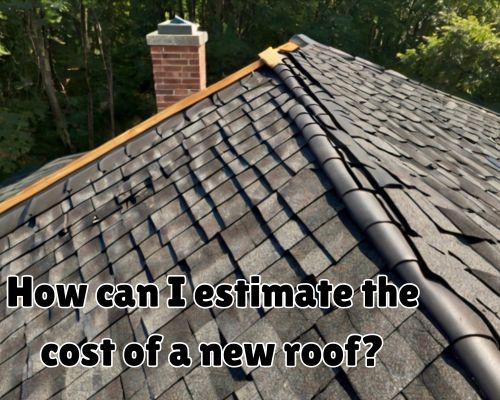
Why Estimating Roof Costs in New Jersey Requires Local Insight
New Jersey’s climate variability, building codes, and diverse housing styles—from Cape Cod homes in Princeton to Victorians in Montclair—affect roofing costs. A national average won’t cut it. You need hyperlocal context.
✅ Salient Point: The average roof replacement in New Jersey ranges from $8,500 to $22,000, depending on materials, square footage, and labor.
Key Factors That Influence Roof Replacement Costs
Before you can estimate accurately, you need to understand what drives the price. Here’s a breakdown of the main cost influencers in New Jersey:
1. Roof Size and Complexity
Roofing is priced per “square”, which equals 100 square feet. A 2,000 sq ft roof translates to roughly 20 roofing squares, not accounting for pitch and overhangs.
- Simple gable roofs are cheaper to re-roof than steep, multi-faceted designs.
- In hilly areas like Morris County, complex angles add to labor costs.
2. Material Type
Material selection is the most significant cost driver. Here’s a local breakdown:
| Roofing Material | Price per Sq (Installed) | Lifespan | Common in NJ? |
|---|---|---|---|
| Asphalt Shingles | $350 – $550 | 15–30 yrs | Very common |
| Metal Roofing | $800 – $1,200 | 40–70 yrs | Growing popularity |
| Slate Tiles | $1,500 – $3,000 | 75+ yrs | Historic homes |
| Wood Shakes | $700 – $1,000 | 20–30 yrs | Coastal homes |
🧠 LSI keywords: roofing material costs, asphalt shingles NJ, metal roofing estimate, best roofing types for New Jersey.
3. Labor Rates in New Jersey
Roofing labor in NJ is generally higher than the national average due to:
- Strict local regulations
- Union influence in areas like Newark and Hoboken
- Competitive demand in affluent zones like Short Hills or Ridgewood
Expect to pay $200 to $400 per square in labor alone. See roofing contractor for more.
4. Tear-Off Costs
If your old roof must be removed, it adds significant cost. A typical tear-off is $1.00 to $2.00 per sq ft, or $2,000 to $4,000 for a 2,000 sq ft home.
Local roofers may charge more in older neighborhoods like Trenton, where layers of roofing or hazardous materials (like asbestos) may be encountered.
5. Permits and Code Compliance
In NJ, you’ll need a roofing permit from your local building authority. For example:
- Jersey City permits may cost around $200–$400
- Ocean County often requires wind mitigation adherence, which can increase installation complexity
Always factor these into your total cost.
6. Timing and Seasonality
Roofing in summer and early fall tends to be pricier due to high demand. If you can wait until late winter or early spring, you may catch off-season discounts.
DIY Roof Estimation: A Simple Formula
You don’t need to be a contractor to get a ballpark estimate. Here’s a simplified calculation:
📏 Step 1: Calculate Roof Area
- For a rectangular house: length × width × pitch factor
- A 2,000 sq ft home with a 1.3 pitch factor = 2,600 sq ft of roofing
📦 Step 2: Estimate Material Cost
- Asphalt shingles @ $4.50/sq ft = $11,700
👷 Step 3: Add Labor
- 2,600 sq ft × $3.50/sq ft = $9,100
🧾 Step 4: Add Tear-Off, Permits & Overhead
- Tear-off: $3,000
- Permits/Disposal/Misc: $2,000
🧮 Estimated Total: ~$25,800
Note: Costs vary by zip code—from Edison to Elizabeth—so consult local pros.
Why Local Roofers in New Jersey Offer Better Estimates
Online calculators provide general ranges, but local roofing contractor bring real precision. They’ll assess:
- Roof deck condition
- Flashing around chimneys & skylights
- Drainage and guttering needs
- Ice dam prevention in Northern NJ zones
Always request at least 3 quotes from licensed and insured roofers. Look for certifications like CertainTeed Master Shingle Applicator or GAF Certified Contractor for peace of mind.
Avoiding Hidden Costs
Too often, homeowners underestimate by ignoring the following:
- Structural repairs: Rotten decking or fascia could add $1,000–$3,000
- Ventilation upgrades: Required for shingle warranties
- Plywood sheathing replacement: At ~$70 per sheet, this adds up fast
Pro Tip: Ask roofers if their quotes are “complete, with contingencies”—not just a low-ball to win your business.
Roofing Incentives in New Jersey
You may be eligible for state and federal incentives if you install energy-efficient materials like cool roofing or solar-integrated panels.
- NJ Clean Energy Program: Rebates for certain materials
- Federal tax credit: Up to 30% for qualifying solar roofing
Also, many HOAs and local municipalities in NJ have rules affecting material choices, so check before you buy.
Final Tips: Smart Roof Budgeting for NJ Homeowners
- Build a 15% contingency buffer into your budget
- Ask about warranties (both manufacturer and workmanship)
- Consider financing through local lenders or roofing companies—many offer 0% short-term plans
- Request before/after photos and aerial drone surveys to assess workmanship
Conclusion: Estimating Your Roof Cost the Right Way
So, how can you estimate the cost of a new roof in New Jersey? Begin by understanding the core cost factors: material, labor, roof size, tear-off needs, and local regulations. Then, layer in New Jersey-specific variables like seasonality, permit pricing, and building codes. Finally, leverage local expertise—not just generic calculators.
With this approach, you’ll not only get an accurate estimate—you’ll also protect your investment, raise your home’s value, and ensure long-term peace of mind.
…
- July 10, 2025
- By Abel Shelton
- Uncategorized
Why Amherst Movers Are the Top Choice for Home and Office Moves

When planning a move in Amherst, it’s crucial to have a trusted partner by your side and that’s exactly what you’ll find at https://amherstmovers.com/. Whether you’re moving across town, relocating to a new city, or shifting your business to a larger space, Amherst Movers is dedicated to making your transition smooth, efficient, and stress-free.
Why Amherst Movers Stands Out
Moving can be overwhelming packing fragile items, coordinating logistics, lifting heavy furniture, and trying to stick to a tight schedule. This is where Amherst Movers makes all the difference. Backed by years of experience and a reputation for reliability, they provide comprehensive moving services tailored to each customer’s unique needs.
From the first phone call to the final box being unloaded, their trained team works diligently to ensure every aspect of your move is handled with care. They know that every move is different, so they offer flexible solutions whether you need full-service packing, furniture disassembly, or just help loading and unloading your truck.
Local and Long-Distance Moving
One of the biggest advantages of hiring Amherst Movers is their versatility. They specialize in both local and long-distance moves. If you’re moving within Amherst or the surrounding area, you can count on their in-depth local knowledge to navigate neighborhoods efficiently, avoiding unnecessary delays and ensuring your belongings arrive safely.
For long-distance moves, Amherst Movers coordinates every detail, from planning the route to securing your items for safe transport. They understand how important it is for your possessions to arrive on time and intact, no matter how far you’re going.

Residential Moving Experts
Your home is filled with memories, cherished possessions, and valuable furniture. Amherst Movers treats each item with the same respect and care you would. Their professional movers use high-quality packing materials to protect delicate items, and they have the tools and skills needed to safely handle bulky or awkward pieces.
Whether you live in an apartment, a condo, or a large family home, Amherst Movers has the resources to complete your move quickly and safely. They can even provide short-term or long-term storage solutions if you need extra time before settling into your new place.
Commercial Moving Solutions
Relocating an office or business requires careful coordination to minimize downtime and avoid unnecessary costs. Amherst Movers offers specialized commercial moving services for offices, retail stores, and other businesses in Amherst and beyond.
Their experienced team works around your schedule to move equipment, furniture, and important files securely and efficiently. They understand that every hour counts when you’re running a business, so they make it their mission to get you up and running in your new location as soon as possible.
Packing and Unpacking Services
Packing can be one of the most time-consuming parts of any move. Amherst Movers takes this burden off your shoulders with their professional packing and unpacking services. They use sturdy boxes, protective wrapping, and proven techniques to ensure your belongings are safe throughout the journey.
Once you arrive at your new home or office, they can help unpack your items and place everything exactly where you want it, saving you days of effort and giving you a head start in settling in.

A Commitment to Customer Satisfaction
What truly sets Amherst Movers apart is their dedication to excellent customer service. They pride themselves on clear communication, punctuality, and honesty. Before your move begins, you’ll receive a detailed estimate with no hidden fees so you know exactly what to expect.
Their friendly staff is always ready to answer your questions and address any concerns, giving you confidence and peace of mind during what can otherwise be a stressful time.
How to Get Started
Booking your move with Amherst Movers is simple. Just visit their website, fill out a quick quote request, or give them a call. They’ll discuss your needs, provide a transparent estimate, and work with you to develop a moving plan that fits your budget and timeline.
Final Thoughts
Whether you’re planning a small local move or preparing for a cross-country relocation, Amherst Movers is ready to make your experience as smooth and hassle-free as possible. With their professional team, top-notch equipment, and customer-first approach, you can focus on the excitement of your new home or office and leave the heavy lifting to the experts.

…
- July 10, 2025
- By Abel Shelton
- Uncategorized
Texas Group Health Insurance: A Comprehensive Guide for Employers and Employees

Texas Group Health Insurance has become an essential tool for businesses seeking to attract and retain top talent while providing financial protection and wellness support for their employees. In a state as vast and diverse as Texas, access to quality healthcare is critical and group health insurance plans offer a cost effective way for employers to meet this need. Whether you’re a small business owner in Austin or managing a large enterprise in Houston, understanding how group health coverage works can help you make informed decisions that benefit your team and your bottom line.
What is Group Health Insurance?
Group health insurance is a single policy issued to a group, typically a business with employees, that offers health coverage to all members of the group. These plans are often more affordable than individual policies because risk is spread across multiple people. Employers typically share the premium cost with employees, making it easier for workers to access healthcare without bearing the full financial burden.
In Texas, businesses with as few as two employees can qualify for a group health insurance plan, although specific eligibility requirements may vary by provider.
Benefits of Offering Group Health Insurance in Texas
Offering group health insurance in Texas has multiple advantages for both employers and employees:
For Employers
- Attract and Retain Talent: In a competitive job market, offering health benefits can differentiate your business from others.
- Tax Incentives: Employers may qualify for tax deductions or credits when providing health insurance.
- Employee Productivity: Healthy employees are more focused, motivated, and less likely to take time off due to illness.
- Reduced Turnover: Comprehensive benefits can encourage long term loyalty and lower recruitment costs.

For Employees
- Lower Premiums: Group rates are generally lower than those for individual plans.
- Broader Coverage Options: Employees often receive access to a wide network of doctors, hospitals, and specialists.
- Peace of Mind: Knowing that they and their families are covered helps reduce stress and financial uncertainty.
Types of Group Health Plans in Texas
Texas employers have several plan options to choose from, depending on the size of their business and their budget:
- Health Maintenance Organization (HMO): Offers lower premiums and requires employees to use a network of designated healthcare providers.
- Preferred Provider Organization (PPO): More flexible, allowing employees to see out of network doctors at a higher cost.
- Exclusive Provider Organization (EPO): Similar to HMOs but with fewer restrictions on referrals.
- High Deductible Health Plan (HDHP): Pairs with Health Savings Accounts (HSAs) to give employees more control over medical spending.
Legal Requirements for Employers
Under the Affordable Care Act (ACA), Texas businesses with 50 or more full-time employees are required to offer health insurance or face penalties. However, many small businesses voluntarily offer group health plans to improve workforce morale and remain competitive in their industries.
In addition to federal rules, Texas has its own regulations to ensure insurers comply with fair practices, offer essential health benefits, and protect consumer rights.

Choosing the Right Provider
When selecting a group health insurance provider in Texas, it’s important to evaluate:
- Plan Options: Does the insurer offer flexible coverage levels?
- Provider Networks: Are local doctors and hospitals included?
- Customer Support: Can your employees easily get help when needed?
- Technology Tools: Are digital portals available for managing claims and benefits?
Popular carriers in Texas include Blue Cross Blue Shield of Texas, UnitedHealthcare, Aetna, Cigna, and Humana, among others.
Cost Considerations
The cost of group health insurance in Texas varies based on several factors:
- Number of employees covered
- Type of plan selected
- Employer’s contribution amount
- Employee demographics
On average, Texas employers pay about 70% to 80% of the monthly premium, leaving the remainder to the employee. Many plans also include options for dependents at an additional cost.
How to Get Started
If you’re considering offering group health insurance, follow these steps:
- Assess Your Budget: Know how much your business can contribute toward premiums.
- Compare Plans: Get quotes from multiple providers and compare coverage, cost, and network quality.
- Educate Employees: Provide clear information to help employees choose the best coverage for their needs.
- Work with a Broker: A licensed insurance broker can simplify the process and ensure compliance with state and federal laws.

Final Thoughts
Group health insurance is not just a business expense it’s an investment in your company’s future. By supporting employee well being, Texas businesses can foster loyalty, improve productivity, and enhance overall workplace satisfaction. Whether you’re a startup in Dallas or a manufacturing plant in El Paso, understanding your group health insurance options is a crucial step toward long term success.
…
- July 8, 2025
- By Rebecca Washington
- Uncategorized
How Much Do Roofers Get Paid in California? A West Palm Beach Perspective on Roofing Pay Rates Across the U.S.
How Much Do Roofers Get Paid in California? A West Palm Beach Perspective on Roofing Pay Rates Across the U.S.
When discussing trades in the construction industry, roofing often comes up as one of the most physically demanding and essential professions. With the rising demand for skilled labor and the ever-growing real estate and commercial development market, many homeowners, contractors, and even aspiring tradespeople in West Palm Beach, Florida are curious: how much do roofers get paid in California?
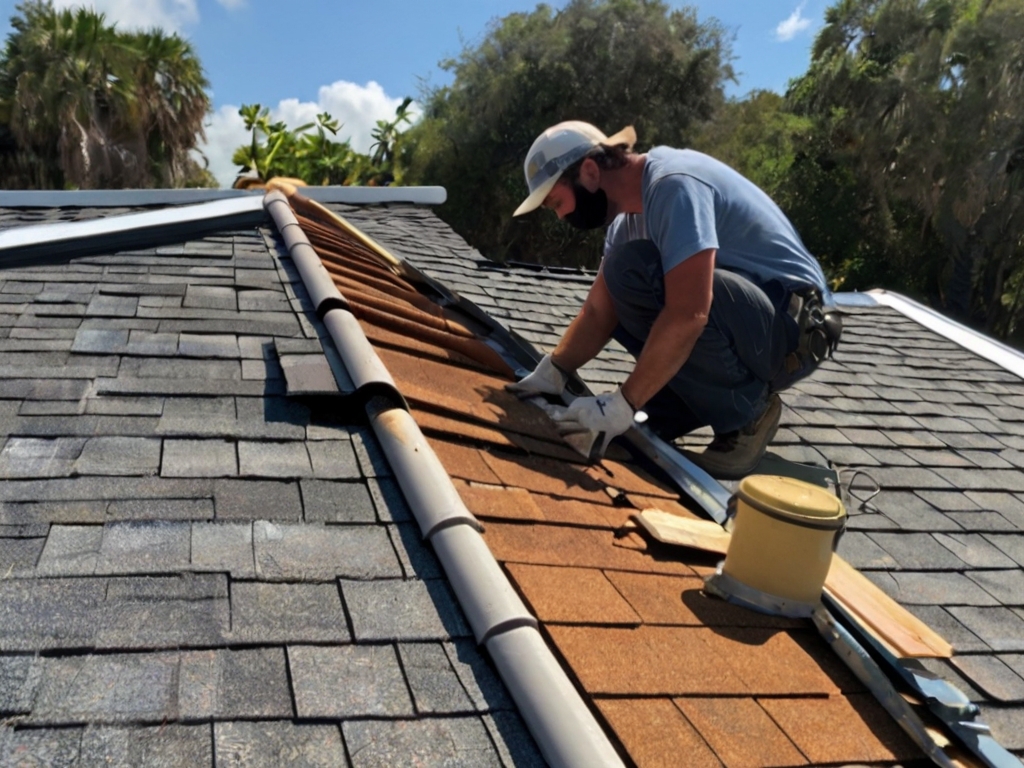
At first glance, this may seem like a purely Californian concern, but examining roofing wages in other states—particularly high-cost-of-living areas like California—can offer valuable insights into labor trends, wage competitiveness, and cost expectations for both clients and professionals in West Palm Beach. Let’s explore the real numbers behind roofer salaries in California, how they compare nationally, and why this matters in South Florida’s local roofing economy.
Understanding the Scope: What Is a Roofer and What Do They Do?
Before diving into compensation figures, it’s essential to clarify what a roofer does. A roofer installs, repairs, and maintains roofs on residential and commercial buildings. The role demands a mix of technical skill, physical stamina, and attention to detail. Roofers often work with materials like asphalt shingles, metal, tile, and flat roof membranes (TPO or EPDM), and must comply with building codes and safety standards.
In West Palm Beach, Florida, roofing jobs often include repairs following hurricane seasons, inspections for insurance purposes, and complete re-roofing projects due to Florida’s intense sun and rain cycles. The same weather-driven demand and insurance considerations exist in parts of California, though regional materials, licensing, and wages differ.
So, How Much Do Roofers Get Paid in California?
According to the latest available data from the U.S. Bureau of Labor Statistics (BLS) and salary aggregation platforms like Indeed and ZipRecruiter, the average pay for roofers in California varies depending on factors such as experience, union membership, certification level, and city.
✅ Average Roofer Salary in California (2024 estimates):
- Hourly Wage: $24 – $40 per hour
- Annual Salary: $50,000 – $85,000+
- Top Earners: $100,000+ in high-demand metro areas like San Francisco or Los Angeles
In large urban centers where cost of living is higher, and union presence is stronger (like the United Union of Roofers, Waterproofers & Allied Workers), wages tend to be significantly better than in rural areas.
Key Factors Affecting Roofer Pay in California:
- Location-Based Cost of Living: Areas like San Jose, Oakland, and San Diego pay more to compensate for housing and living expenses.
- Union vs. Non-Union Work: Union roofers in California typically earn 20–30% more with benefits, pensions, and better safety conditions.
- Commercial vs. Residential Work: Commercial roofers often earn higher rates due to scale, safety complexity, and height considerations.
- Certifications and Licensing: Licensed contractors or certified roofing technicians with OSHA training or NRCA credentials command premium rates.
How Does That Compare to Roofers in West Palm Beach, Florida?
In Palm Beach County, roofers are paid slightly less on average due to lower cost of living, fewer unionized jobs, and different market conditions.
📍 West Palm Beach Roofer Pay:
- Hourly Wage: $18 – $28 per hour
- Annual Salary: $37,000 – $60,000+
- High-End Earners: $70,000 – $80,000 with extensive experience or specialty skills (e.g., metal roofing, tile repair, waterproofing)
However, West Palm Beach’s roofing industry thrives due to the region’s climate-related needs. Regular re-roofing, storm damage assessments, and the demand for wind-resistant materials like architectural shingles, tile, or standing seam metal roofs create steady opportunities for roofers. See roofing contractors for more.
Why Californians’ Roofing Wages Matter to Florida Residents
You may wonder: Why should a homeowner, contractor, or roofer in West Palm Beach care about roofing salaries in California?
There are several reasons:
1. Labor Migration & Retention
With roofers potentially relocating to higher-paying states like California or Texas, local contractors in Florida must stay competitive with compensation and benefits to retain skilled tradespeople. Understanding out-of-state benchmarks is key.
2. Pricing Justification
If you’re hiring a roofer in Florida, comparing national labor rates helps justify local pricing—especially if materials are sourced nationally or subcontractors move between states seasonally.
3. Industry Trends
National wage growth in skilled trades often signals rising demand. Roofing wages in California have seen steady year-over-year increases due to labor shortages and stringent building regulations. These ripple effects eventually reach Florida’s coastal cities like West Palm Beach.
Insights for Aspiring Roofers in West Palm Beach
If you’re considering a career in roofing from West Palm Beach, California’s roofing wages could be aspirational benchmarks. But don’t overlook the value of staying local:
- Florida-Specific Certifications like the Certified Roofing Contractor License (CCC) help you charge more locally.
- Hurricane Recovery Work and insurance-related repairs offer high-paying jobs year-round.
- Lower Costs of Doing Business in Florida can mean higher take-home profits for independent roofing contractors.
Plus, West Palm Beach’s real estate market continues to grow, making it fertile ground for residential and commercial roofing opportunities.
Tips for Homeowners: Hiring a Roofer in West Palm Beach
If you’re a homeowner, learning about national wage trends is smart—especially when budgeting for a new roof or repairs. Here’s what you should keep in mind:
- Always Hire Licensed Roofers: In Florida, roofers must be licensed through the Florida Department of Business and Professional Regulation (DBPR).
- Get Multiple Quotes: Compare local rates and ask about certifications and warranty coverage.
- Ask About Labor Costs: Understand how much of your roofing quote goes toward labor versus materials.
💡 Pro Tip: A roofer charging slightly more may be aligning with fair wages and safety standards. Don’t immediately default to the cheapest bid—especially in storm-prone areas like Palm Beach County.
Conclusion: Roofing Pay in California and Its Broader Implications
So, how much do roofers get paid in California? The answer ranges from $50,000 to over $100,000 annually depending on experience, union affiliation, and location. While those rates exceed those in West Palm Beach, Florida, they reflect a broader national trend of increasing demand for skilled tradespeople.
For homeowners, understanding these wages informs smarter hiring decisions. For roofers and contractors, it’s a reminder to stay informed, upskill, and benchmark competitively—whether you’re operating in the sun-soaked suburbs of West Palm Beach or the tech corridors of Northern California.
…
- July 3, 2025
- By Abel Shelton
- Uncategorized
Auto Transport Broker Leads: Driving Growth Through Facebook Strategies

on Facebook, businesses across every industry are finding new ways to connect with potential customers, and auto transport brokers are no exception. The digital age has revolutionized how leads are generated, and social media platforms have become essential tools for building brand visibility, trust, and ultimately, sales. For auto transport brokers seeking qualified leads, Facebook offers a powerful, low-cost channel to reach vehicle owners, dealerships, moving companies, and other clients in need of transportation services.
Understanding Auto Transport Broker Leads
Auto transport broker leads are contacts or prospects who are actively seeking vehicle shipping services and are likely to convert into paying clients. These leads may be individuals relocating across the country, military personnel on assignment, snowbirds migrating seasonally, or car dealerships managing fleet transfers. Brokers don’t own trucks but act as intermediaries, matching customers with reliable carriers. The quality and quantity of leads directly affect their ability to close deals and scale operations.
Why Facebook Is a Game Changer for Lead Generation
With over 3 billion active users, Facebook has become a cornerstone of digital marketing. Its ability to target users based on location, interests, behaviors, and demographics allows auto transport brokers to reach highly specific audiences. Whether you’re aiming to attract college students moving out-of-state or classic car enthusiasts shipping vehicles to auctions, Facebook can deliver your message to the right people at the right time.
Facebook’s ad platform is particularly useful for brokers. You can set budgets, test multiple creatives, and monitor conversions in real-time. Sponsored posts, carousel ads showcasing testimonials or vehicle types, and even short videos explaining how your service works can engage users effectively. When optimized properly, these tools help generate warm leads who are more likely to inquire, request quotes, and schedule shipments.

Building a Strong Facebook Presence
Having a dedicated Facebook business page is the first step. This should include all essential information company description, contact details, photos of past shipments, and links to your quote request forms. Frequently posting updates, responding to comments, and maintaining consistency in tone and branding help to build trust and keep followers engaged.
Content ideas for auto transport brokers on Facebook include:
- Behind-the-scenes videos of vehicles being loaded/unloaded
- Customer reviews and testimonials
- Educational content explaining the shipping process
- Seasonal offers or discounts
- Blog links on auto transport tips and FAQs
Engaging content encourages shares and interactions, expanding your organic reach and increasing visibility to potential clients outside of your immediate follower base.
Facebook Groups and Community Engagement
Beyond business pages, Facebook Groups offer another opportunity for lead generation. Many communities exist around vehicle shipping, relocation, car sales, and travel. Participating in these groups not spamming, but providing helpful information and answering questions can position you as a knowledgeable and trustworthy expert. Over time, members will begin to reach out for services, turning casual interactions into warm leads.

Facebook Ads Strategy for Brokers
A well-planned Facebook ad campaign can yield exceptional results. Start by identifying your target audience for instance, people aged 30-60 who recently searched for moving services or are part of car enthusiast communities. Use lead forms directly in the ads to capture contact information without requiring users to leave Facebook, thus increasing conversion rates.
Key ad types to test:
- Lead Generation Ads: Use Facebook’s built-in forms to collect names, emails, and shipping needs.
- Retargeting Ads: Show ads to people who visited your website but didn’t complete a quote form.
- Lookalike Audiences: Find new users similar to your existing customers using Facebook’s AI.
Integrating Facebook Leads Into Your Workflow
Once you begin generating auto transport broker leads from Facebook, the next step is seamless integration into your CRM or lead management system. Tools like Zapier or Facebook’s direct API allow you to automatically sync leads to your database, assign them to your sales team, and follow up promptly.
Speed is crucial. The faster you respond to a lead, the higher the chance of conversion. Aim to contact every lead within minutes, ideally with a personalized message or a quick call. Automated email sequences can also help nurture leads who aren’t quite ready to book.
Conclusion: Unlocking Growth with Facebook
In a highly competitive industry, standing out means being present where your customers are and that’s increasingly on Facebook. By leveraging this powerful platform for both organic engagement and paid advertising, auto transport brokers can tap into a steady stream of qualified leads. From strategic ad campaigns to active community participation, Facebook can become a cornerstone of your lead generation strategy, driving both revenue and brand recognition in the vehicle shipping world.

…
Categories
About Us

A company environment is a set of factors, such as modern technologies and funds, that have…
Let’s Talk

Harold A. Wiggins
Address:
Lagrange, GA 30240
Phone:
706-883-0040
Email:
talk@killarney-innovation.com
Must Read
Recent Posts
- Unlocking Growth with Exceptional Auto Transport Lead Generation
- No More Stalls: A Player-First Way to Top Up AFK Journey
- Expert Water Heater Services in Santa Cruz County: Installation, Repair & Replacement
- BVI Yacht Charters for Unforgettable Honeymoons and Group Adventures
- Trusted Appliance Movers for Safe and Easy Relocation
- Why Spears & Marinakis Lead as the Top Workers’ Compensation Attorneys in Southern, Southwest, and Central Ohio
- The Complete Guide to Appliance Movers: Ensuring a Safe and Efficient Relocation
- Trendy Nail Salons Near Me Providing Manicures, Pedicures, and More
- How to Choose the Best Appliance Movers for Your Move
- Comparing Arcade Mode vs Open Practice at Racing Line
- Experienced Workers’ Compensation Lawyer and Compensation Attorney in Ironton for Injured Workers
- How to Choose the Best Appliance Movers for Your Relocation
- The Ultimate Guide to Spotting Fake Moving Leads and Protecting Your Business


